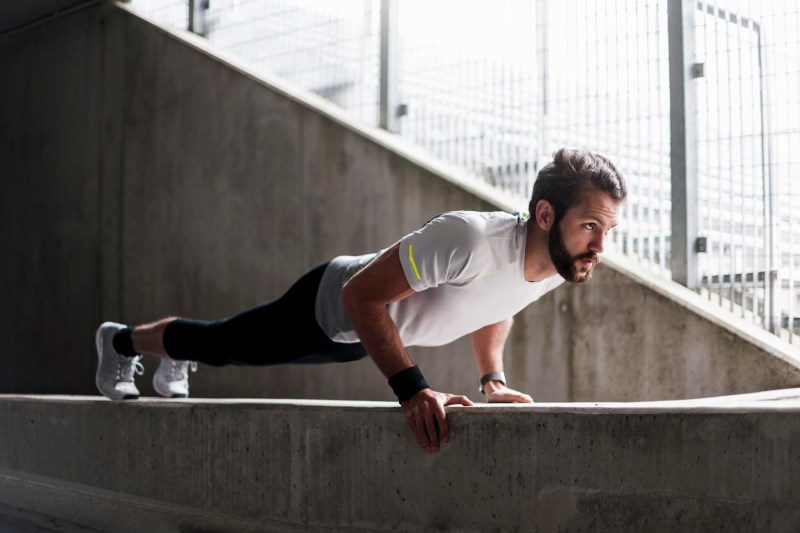Push-ups are convenient because they don’t require any equipment or a gym membership. They’re also an effective bodyweight exercise for maximizing your upper body power. Push-ups are a superior benchmark of physical fitness. New expert guidelines from the Mayo Clinic reveal the total number of push-ups the average person should be able to power through. There seem to be mixed responses surrounding these new guidelines, and survey results reveal that 53.8% of adults in the United States can’t perform more than ten consecutive push-ups. Only 17.4% report being able to perform between six and ten in a row. Let’s look at the new guidelines, the benefits of push-ups, and the best variations to optimize your fitness.
New guidelines

The Mayo Clinic revealed a target number of push-up counts to strive for.
Here are the guidelines for men:
- 25 years old — 28 push-ups
- 35 years old — 21 push-ups
- 45 years old — 16 push-ups
- 55 years old — 12 push-ups
- 65 years old — 10 push-ups
Fitness experts say the number of push-ups you can do in a row depends on several factors, such as your health and fitness level. If you have an athletic background and a more advanced level of physical
What muscles are targeted during push-ups?

Push-ups are a classic compound exercise worth including in your training schedule. You’ll target multiple muscle groups, including your:
- Pectoral muscles in your chest.
- Triceps in your upper arms.
- Anterior deltoids at the front of your shoulders.
Muscles in your legs and core also help stabilize your body in the straight plank position.
What are the benefits of push-ups?

The following are some of the many benefits of push-ups:
- Build upper body muscle.
- Enhance your overall physical fitness and stamina.
- Improve your body composition.
- Carve a more muscular chest, arms, and shoulders.
Research shows weighted push-ups can provide similar muscle activation as the bench press, so it could be time to grab some weights and try a push-up variation like the Renegade row push-up. Other interesting research on male firefighters shows that being able to perform more push-ups was associated with a reduced risk of heart attack, stroke, and cardiovascular events.
The best push-up variations to try

Here are some of the best push-up variations to try:
- Spiderman push-up
- Wall push-up
- Incline push-up
- Wide grip push-up
- Close grip push-up
- Reverse grip push-up
- Decline push-up
- Push-up with single leg raise
- Uneven push-up on a medicine ball
- Renegade row push-up
- Weighted vest push-up
- Clap push-up
- The Mike Tyson push-up
No matter your current push-up count, you’ll improve your strength and endurance over time as you practice proper form. You can incorporate push-ups or push-up variations into your push day or upper body training days.




